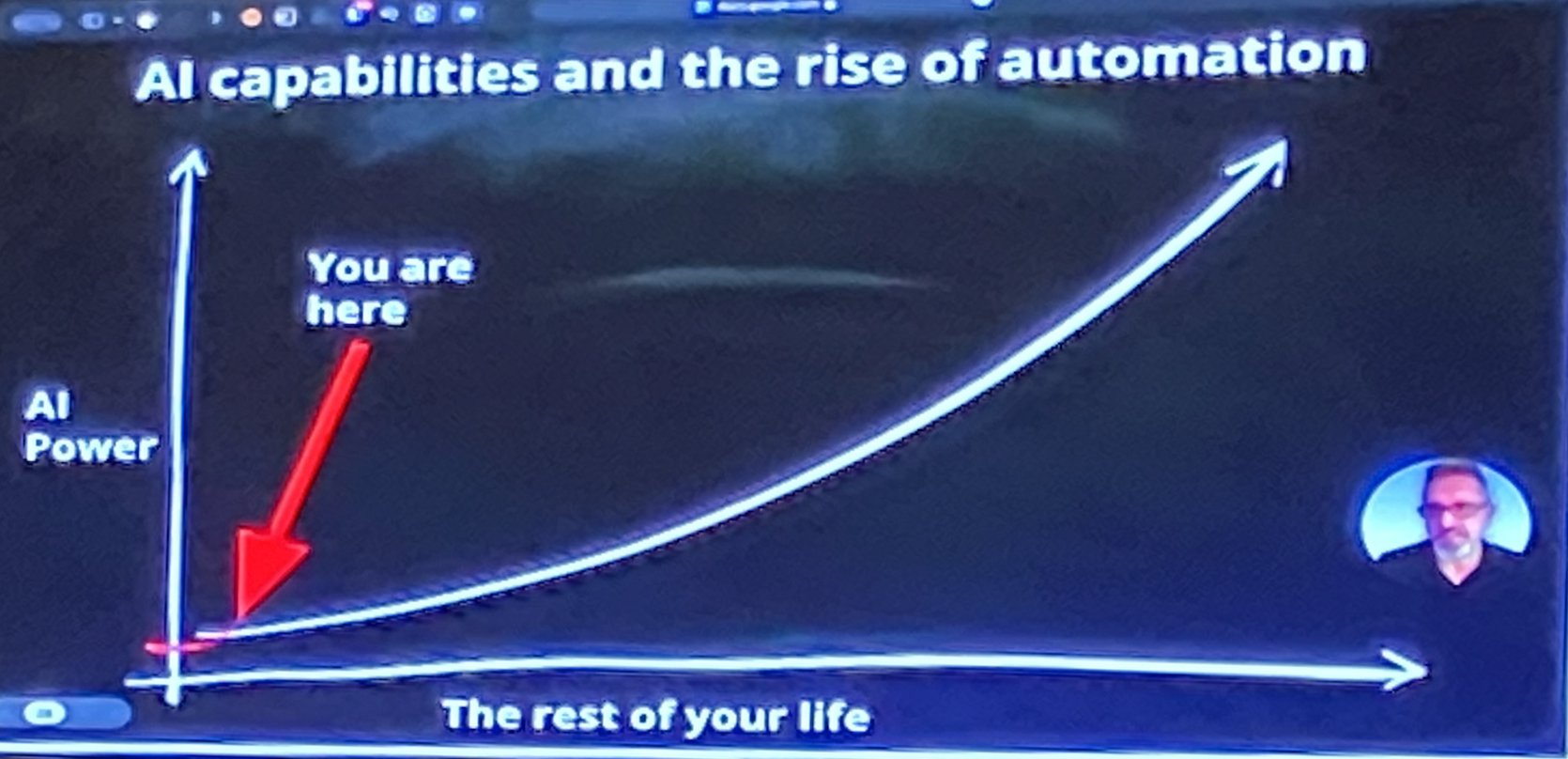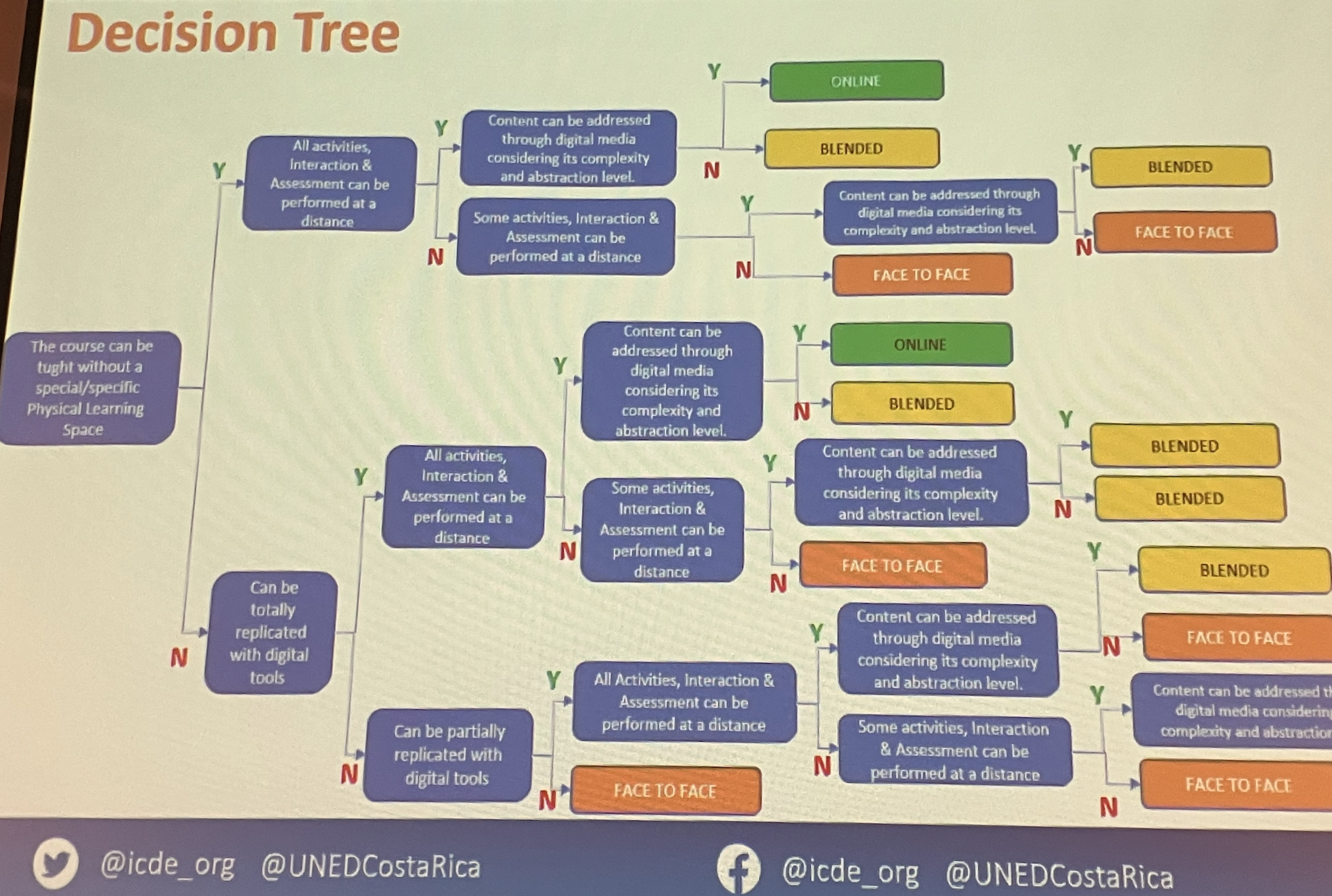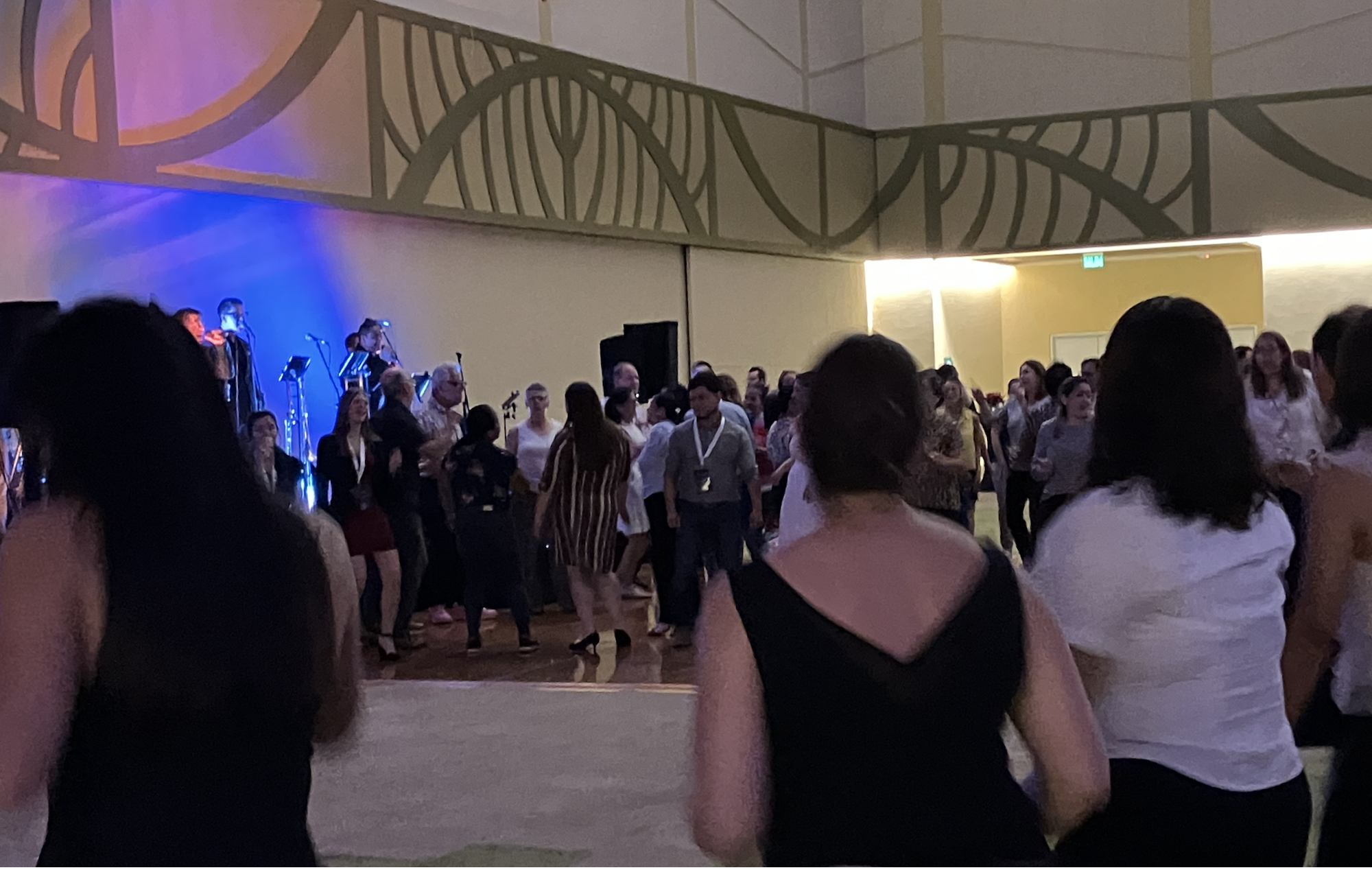
This was, from my perspective, much better than the first day: two good keynotes and one session that was worth the whole trip.
Keynotes
I went to the two morning keynotes:
Micro-credential implementation at the Wawasan Open University, Malaysia
This presentation (in person) by Lily Chan, the university Vice-Chancellor, was clear and precise with excellent graphics. She laid out the argument for micro-credentials, the government’s policy, and why micro-credentials were a perfect fit for the university’s mission/mandate. She then explained how the existing infrastructure of an open university, such as its admission policies, its governance and compliance framework, and its existing student information and learning management systems, enabled a smooth integration of micro-credentials into its offerings. The presentation gave clear guidelines about what is needed for the successful integration of micro-credentials into a university’s offerings.
How we can use AI to make education amazing
I can give only a taste of Martin Dougiamas’ brilliant presentation (done remotely) that laid out his vision of how the use of what he called Open Education Technology (OET) can make a ‘much better job of educating than anything we had in the past.’
He claimed that generative AI is going to impact our world even more than the Internet. AI is still in its infancy and will get exponentially more powerful, leading to machine intelligence with many times the capacity of the human brain. As a result AI will replace most human labour and with a universal basic income we could have a golden age where we could spend our time doing what we want to do, including (re-)creating a sustainable planet and living harmoniously. Part of this vision is built on the idea of open education technology that would allow each person to have their own AI-driven intellectual and personal learning assistant, whose potential functions Dougiamas set out in detail. However, this would be dependent on trust, provided by certified open source software that protects your privacy.
It was refreshing to see such an optimistic view of AI, but Dougiamas obviously prefers to ignore Cory Doctorow’s novels and the movies Blade Runner or the Matrix, which offer a more dystopian view of the future. Dougiamas’ vision is dependent on trust and ethical and effective governance of AI. I leave you to judge what is most likely.
Parallel sessions
I went to several parallel sessions but I am reporting only on those that were of most value to me.
How to define which courses or programs to offer in digital modalities
What should my course be: fully online, hybrid/blended, hyflex or fully face-to-face? This is a choice now that every instructor, and institutions as a whole, now have to face. This presentation, by Maribell Reyes, Director of Distance Education, and her colleague, Laura Zepeda Orantes, of Tec de Monterrey, Mexico, set out a framework and process to enable such decisions to be rational, evidence-based and consensual.
I cannot say how much I was impressed by this presentation and by the project it was reporting. The framework has already been piloted and is now being rolled out through the institution. Decisions are based essentially on a set of decision trees and includes a process for identifying who should be making the decisions and an analysis of the key factors that should influence the decision. The key factors to be considered (at least at Tec de Monterrey) are:
- student profile
- learning space (physical presence)
- content complexity (which I interpret as media requirements for understanding)
- assessment
- learning outcomes.
The process results in a decision tree as below:

You would expect this kind of systematic decision-making process from a major engineering and business school such as Tec de Monterrey, and the process may be too lengthy, complex and systematic for many, but this kind of approach is absolutely needed. We cannot just rely alone on an instructor’s ‘intuition’ that the subject can only be taught in class in the same way as it has always been taught. This may be true in a few instances, but at least the decision will be valid if it is reached as the result of such a process.
ICDE at 85
ICDE is one year older than me and I have over 40 years association with it but nevertheless I was surprised that nearly 100 people turned up to hear three old white men (Morten Flate Paulsen, Alan Tait and John Daniel) rabbit on about its history, which turned out in fact to be quite interesting.
There was a major pivot 40 years ago when (in Vancouver) it changed from ‘correspondence’ to distance education, broadening the organization away from commercial correspondence companies to public open universities.
I feel that 40 years later it needs to pivot again. Open universities are no longer the sole providers of distance education, although open education remains highly relevant, especially for what I may call developing countries who still have millions unable to access higher education. However, over the last forty years there have been two major developments that affect ICDE:
- in developed countries, there is now almost universal access to higher education but still a few specific gaps or sectors that struggle because of cost
- most ‘traditional’ campus-based universities are all offering some form of distance education, in the form of fully online courses.
These changes were not well reflected though in the attendance at this conference. Many of the major providers of distance education, such as the University of Maryland, Southern New Hampshire, Western Governors, Arizona State, and Maricopa Community College in the USA, BCIT and Université Laval in Canada, and universities in Australia, were all unrepresented here, but ICDE still appeals mainly to those institutions solely dedicated to distance education. Nevertheless the vast majority of distance learners are in now in ‘conventional’ institutions.
The development and acceptance of online learning and hybrid learning in conventional institutions has resulted in these areas becoming central rather than peripheral functions of higher education institutions, but distance education and online learning still have their own needs, philosophies and techniques, and ICDE should be able to cater for this.
Disastrous sessions
I went to two completely awful sessions and walked out of them half way through. Please, when presenting (a) have something to say other than opinions and generalities (b) make sure the technology works – we need to be able to hear and see you. This was not a facilities problem but a presenter problem.
Other good things
I found out a little more about UNED in Costa Rica. It is a public university that operates across the country and has regional centres. It has recently been allocated a frequency for television and is planning to have programs made in the regional centres for broadcast throughout the country. This is important because many rural areas in Costa Rica have inadequate Internet access, whereas television is universally available.
There was a nice gala dinner with a great salsa band. I realised that as much as I love dancing there was no way I could match the grace and beauty of the Costa Ricans on the floor. But I did have a go.










 Dr. Tony Bates is the author of eleven books in the field of online learning and distance education. He has provided consulting services specializing in training in the planning and management of online learning and distance education, working with over 40 organizations in 25 countries. Tony is a Research Associate with Contact North | Contact Nord, Ontario’s Distance Education & Training Network.
Dr. Tony Bates is the author of eleven books in the field of online learning and distance education. He has provided consulting services specializing in training in the planning and management of online learning and distance education, working with over 40 organizations in 25 countries. Tony is a Research Associate with Contact North | Contact Nord, Ontario’s Distance Education & Training Network.

